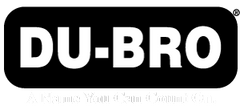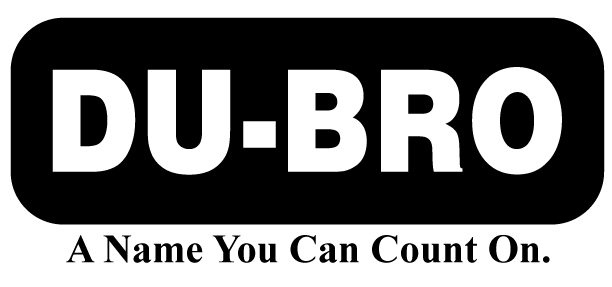Proper maintenance doesn’t just extend the life of your RC airplane—it prevents crashes, improves reliability, and ensures your model performs exactly as designed. In this DU-BRO 101 session, we walk through a fast but thorough maintenance checklist that every pilot should complete before flying. Each step takes only a few minutes, but together they create a safer, more predictable, and longer-lasting aircraft.
Below is a breakdown of critical inspection points, paired with trusted DU-BRO hardware that keeps your model operating flawlessly.
1. Spinner & Prop Nut Safety Check
Remove the spinner dome, inspect it for cracks, and tighten the prop nut. A loose prop can lead to severe vibration or mid-air separation. Many pilots upgrade to DU-BRO’s Tru-Spin Prop Balancer to keep props running smooth and safe:
2. Throttle Linkage & Clevis Integrity
Check for corrosion, wear, and proper operation on your throttle clevis and keeper. For long-term reliability, many pilots use DU-BRO Nylon Clevises, known for durability and smooth operation:
3. Fuel Filters, Lines & Clips
Remove and inspect your fuel filter. Replace or flush elements as needed. Check fuel lines for cracks, stiffness, or cuts—especially around clips. Fuel line clips should never have sharp edges. For replacements, DU-BRO Silicone Fuel Tubing is the hobby standard:
4. Motor Mount & Nose Gear Tightening
Use your DU-BRO Ball Driver Set to tighten motor mount bolts and check nose gear hardware. Ensure grub screws, steering arms, pushrod linkages, and collets are secure.
For smooth taxiing and durable landing gear support, modelers rely on DU-BRO’s Treaded Wheels
5. Fuel Tank Inspection
Remove and open the tank, check internal lines for nicks, brittleness, or corrosion. Replace as needed and reinstall securely with new clamps. DU-BRO’s Fuel Tank Clunk Filters improve reliability and fuel draw:
6. Hinges, Horns & Servo Tray Review
Check aileron, elevator, and rudder hinges for corrosion or loose glue joints. Apply Rail Zip 2 where appropriate. Confirm all control horns are firmly attached and verify that clevis and linkage hardware is secure.
Many builders upgrade to DU-BRO Heavy-Duty Control Horns for long-term strength:
Inspect the servo tray, screws, ball links, Velcro, and antenna routing. Look for chafed wires and correct them immediately.
7. Battery, Lubrication & Pushrod Service
Cycle your receiver battery to confirm capacity and health. Lubricate wheel axles with PTFE. Remove pushrods if needed, clean them, and apply dry Teflon lubricant inside guide tubes for friction-free control.
8. Final Engine Run-Up
Before heading to the runway, perform a complete systems check:
-
Start the engine
-
Verify throttle response
-
Check for fuel leaks
-
Test all control surfaces under load
Also cycle your glow plug igniter to ensure it’s ready for the next start.
Final Thoughts
Good maintenance isn’t optional—it’s the foundation of safe, consistent flying. By combining smart habits with high-quality hardware from DU-BRO, you’ll enjoy more flights, fewer failures, and a more reliable fleet.


